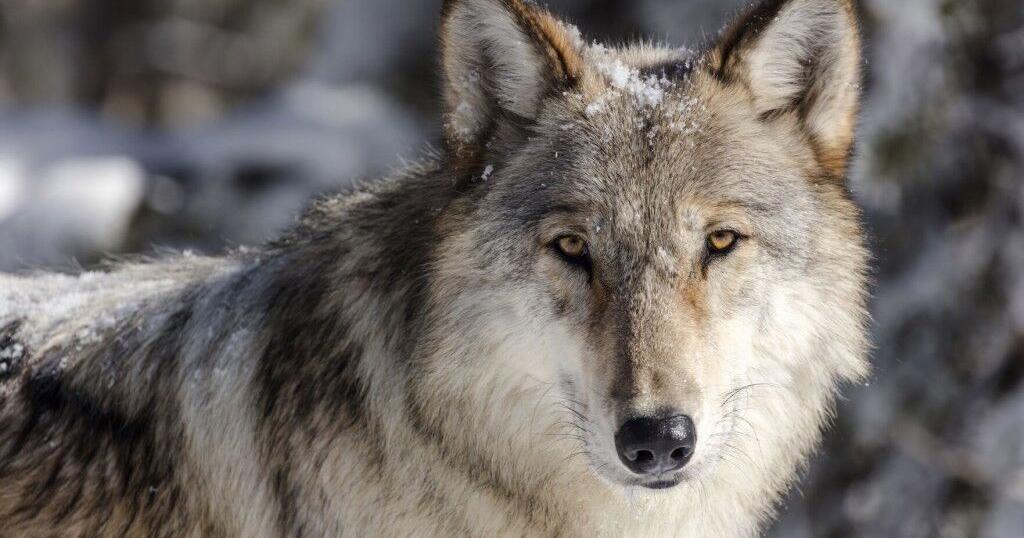Animal advocates sprung into legal action on Wednesday, unleashing a lawsuit challenging Wisconsin’s recently unveiled wolf management strategy. The legal saga accuses state wildlife officials of fumbling through open meetings laws and sidelining insights from both wolf researchers and supporters. This legal drama sheds light on the heated discourse in Wisconsin, where farmers wrangle over the surging wolf numbers wreaking havoc on livestock, hunters grapple with the perceived menace to deer, and conservationists champion wolf preservation, asserting that the species hasn’t yet found a secure niche in the state.
The Great Lakes Wildlife Alliance, also recognized as Friends of the Wisconsin Wolf and Wildlife, has launched a recent legal crusade in Dane County Circuit Court. Advocating for a diverse coalition that spans hunters, farmers, politicians, business owners, and animal welfare enthusiasts, this organization staunchly supports conservation based on scientific principles.
Within the legal labyrinth, the lawsuit argues that members of the Department of Natural Resources policy board clandestinely continued seeking input on the wolf management plan from preferred interest groups even after the public commentary period concluded in February.
It’s alleged that board members engaged in discreet conversations orchestrated by the Wisconsin Wildlife Federation, the Wisconsin Association of Sporting Dogs, and Wisconsin Wolf Facts in February, April, and July. The lawsuit contends that members of the Great Lakes Wildlife Alliance were left out of the April and July sessions, with no reference to their inclusion in the February meeting.
The lawsuit contends that even though a quorum of board members was absent from these meetings, sufficient involvement transpired to exert influence over modifications to the wolf management plan. After closed-door discussions in February with organizations advocating for more stringent limits on the wolf population, former department secretary Adam Payne announced revisions, sparking concerns about the breach of open meeting statutes, according to the lawsuit.
The legal filing also claims that DNR officials gave scant regard to scientific studies challenging the accuracy of the department’s wolf population counts and dismissed comments warning that hunting and trapping wolves might not mitigate conflicts with humans. It further asserts a lapse in assessing the perils of overhunting wolves, allowing subjective opinions and unverified anecdotes of wolf aggression against hunters to shape the plan, without citing specific incidents.

On Wednesday afternoon, DNR spokesperson Molly Meister, responding via email, cited the constraints of pending litigation, refraining from commenting on the unfolding legal battle.
Since adopting a wolf management blueprint in 1999, envisioning a capped population of 350 wolves, the latest estimates from DNR reveal a stark contrast, with approximately 1,000 wolves now in the mix. The political landscape shifted in 2012 when Republican legislators sanctioned an annual wolf hunting season, leveraging the 350-wolf threshold to rationalize hefty kill quotas. This move, however, ignited backlash from animal rights activists.
The legal pendulum swung last year when a federal judge reinstated gray wolves on the endangered species list across the lower 48 states. This decree rendered hunting illegal, confining farmers to nonlethal control methods. With the anticipation of wolves being delisted and hunting recommencing, the DNR has been crafting a revised wolf management strategy.
The recent board greenlit a proposal advocating for maintaining the statewide wolf population at around 1,000, abstaining from a rigid numerical cap. Instead, it suggests allowing the population to ebb and flow within defined numerical boundaries—a compromise lauded as flexible by DNR officials. Nevertheless, farmers and hunters castigate the absence of a concrete population ceiling, prompting Republican lawmakers to push for legislation mandating a specific numeric limit in the plan. The stage is set for a contentious clash between wildlife conservation and stakeholders seeking regulatory clarity.
